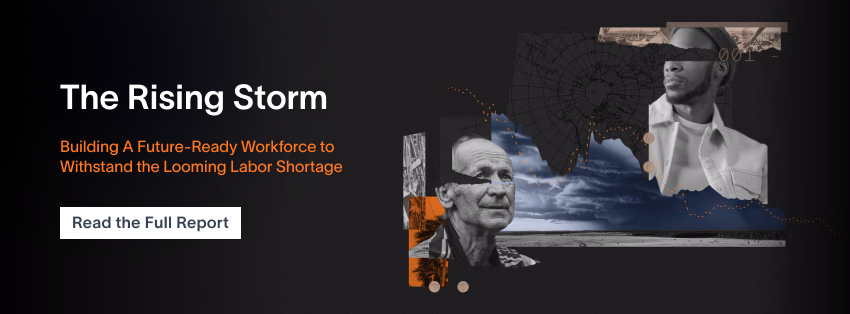The rate of quitting was the highest on record, job openings also saw record highs, “Now Hiring” signs in windows across the nation advertised higher wages, and inflation followed not long after. From 2021 to 2023, the Great Resignation completely upended the labor market—but why? Was it long overdue? Is it Gen Z’s fault for being quitters? Was it just the shock of losing millions of people to COVID-19, and ongoing health concerns? All of those answers might make sense, but looking at all of them at once, we see how hard it is to pick up a clear message when so many signals are being sent. Disruption on this scale presents a Rorschach test, and people saw what they expected to see.

Instead of speculating, let’s look at the data. This is from the Pew Research Center, which surveyed workers who quit their jobs in 2021. Any number of factors could lead to someone wanting to quit their job, and that diversity is represented here.
Employers have been paying attention, and have been posting jobs that offer many of the benefits that quitters said they were looking for. Career advancement clearly stands out at the top of the chart below, offered in nearly 20% of all postings by 2024, and it ranked second among the reasons for quitting in 2021. Whether workers feel a lack of flexibility, need more childcare options, or want to relocate to a new area, one potential solution is remote work, which saw an uptick in 2022 and 2023 in the wake of the Great Resignation. Postings mentioning childcare specifically have seen a steady rise over the past five years as well.
You’ll notice that a few of those offerings dipped down from 2023 to 2024. That’s because the balance has shifted: the competition for workers has cooled off.
Workers might have been looking for other jobs because of dissatisfaction or an eagerness for new opportunities, but they actually quit their jobs because they were confident they could find another. That’s no longer the case.
While the rate of quitting in 2022 was the highest seen since JOLTS data was first collected, data since then shows how quits and openings have tapered off again since then.
The dust has settled. So what have we learned? Two things: we know what industries are most at risk, and what it looks like when they lose workers. But secondly, and more importantly, we know the next wave of resignations is coming—and it will look very different from what we saw two years ago.
The industries with the highest quit rates, according to the Bureau of Labor Statistics, are Food Service, Hospitality, Retail Trade, Arts, and Transportation and Utilities. Lightcast data can tell us the current occupations of the workers in those industries who quit their jobs from 2022 to 2024. Where are they now? (select the tab to toggle between industries)
Arts and transportation workers are generally still in the same field. But workers who quit their jobs in food service, retail, and hospitality are more likely in totally new industries. So those industries are most at risk, especially because they’re competing for the same workers. These are also the industries that saw the highest wage increases over the past several years, which led to
The other conclusion is more serious: 17.9% of the current population is over 65 years old, and 12.49% of the population is between ages 55-64. This means that within the next 10 years, about 30% of the US population will be at retirement age, and declining birth rates mean there won’t be enough people to replace them.
As tempting as it is to blame “kids these days,” they aren’t the ones leaving the labor force. Out of the 5 million workers who have left the labor force since 2020, 80% are over the age of 55. This has led to understaffing and shortage challenges that foreshadow what we’ll see in the future, as US population growth will outpace labor force growth by nearly 8 to 1. (This pattern was what drove our demographic research last year in The Rising Storm, which also goes into these trends in more detail.)
We aren’t going to see another pandemic in the coming decades that concentrates changing expectations into one seismic shift. But quits are still going to happen—and they’re going to take the form of retirements.




